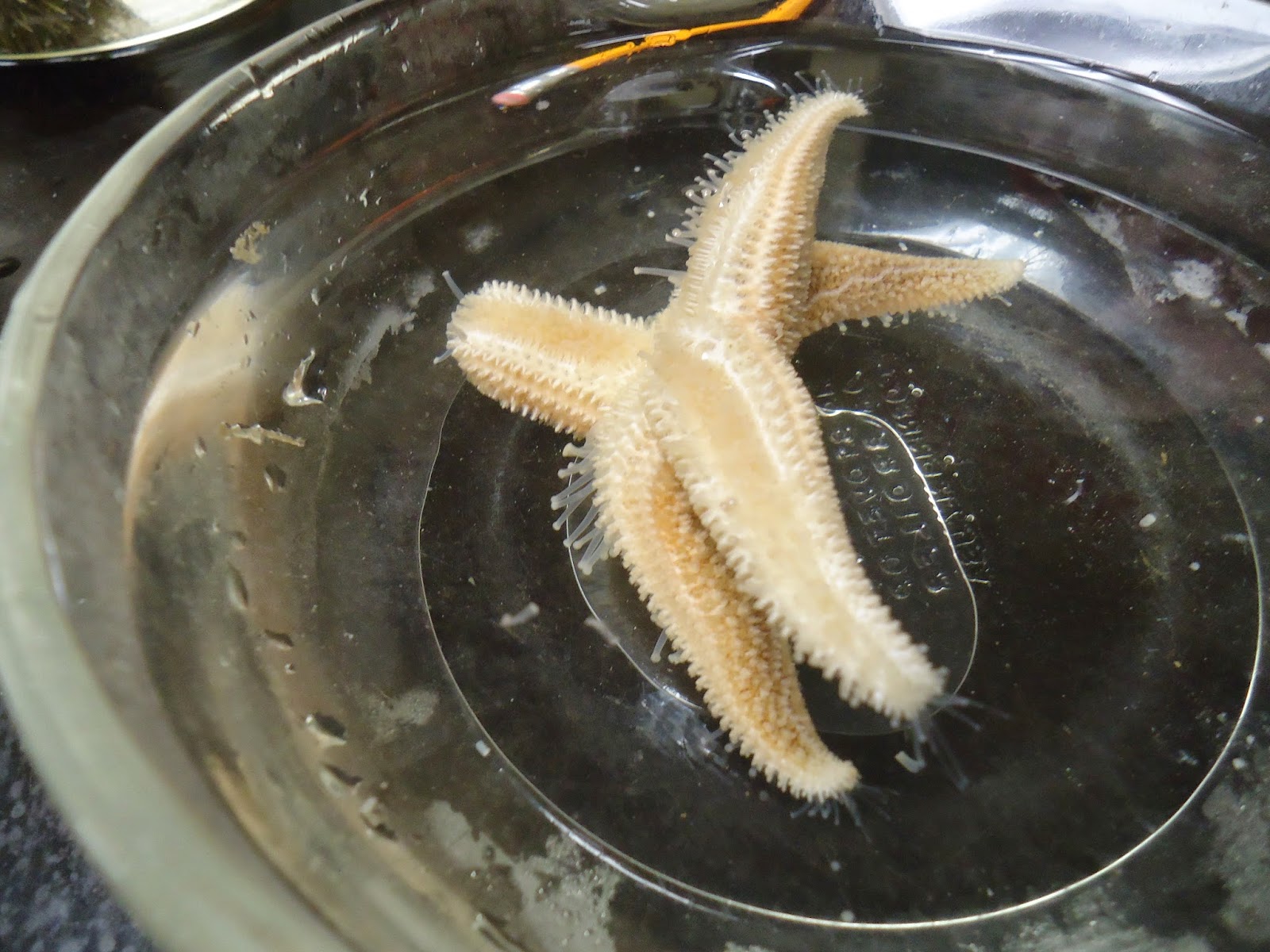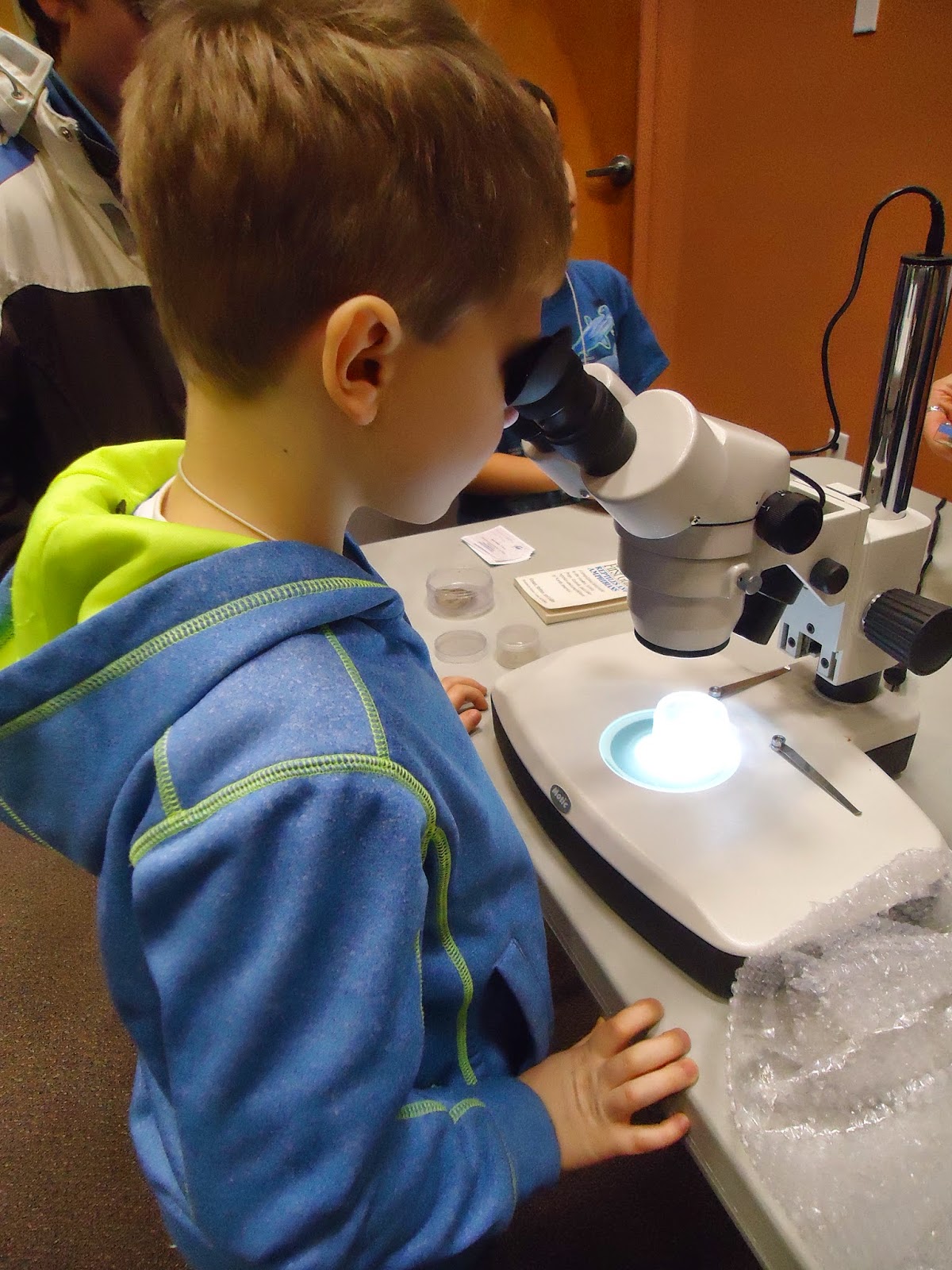Today the Young Explorers started off Fish Day by having a tour around the aquarium to see all the different species of fish on display. Then the students picked their favourite to study and observe. The spotted wolffish were popular, as were the ocean pout and the lumpfish.
In the lab we had the chance to study salmon eggs, alevins, and skate eggs using the microscopes. The students really enjoyed it and thought it was pretty cool that you could see the little salmon moving around inside the egg. Looking through the microscopes was so fun we just had to get some animals from the touch tank to check out as well!
After lunch we helped the aquarium staff feed all the different fish tanks in the aquarium, including the pollock, cod, sculpins, mummichogs, and flounder. We even had the chance to feed the animals in the touch tank.
To finish the day we went out to enjoy the beautiful sun and see what animals we could find living outside the aquarium. We found deer trails and scat, a mouse trail and tunnel, a spot where a bird had been taken by possibly a fox, and lots of mallard ducks.
Observing the spotted wolffish.
Magnified salmon alevin and eyed egg.
Having fun using the microscopes.
Skate egg case (or mermaid's purse).
Getting ready to help feed the fish.
Watching the mummichogs eating.
Checking out the frozen beach.



















































